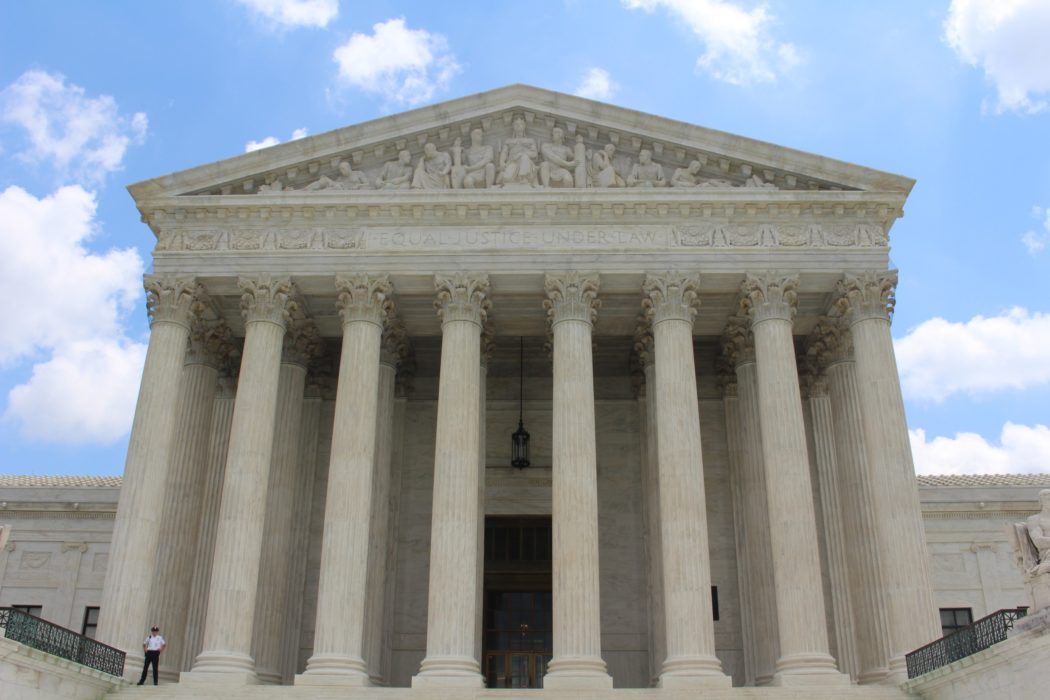
By Michael Burns, courtesy of SBAM Approved Partner ASE
Two Decisions on Two Mandates
Last Thursday the U.S. Supreme Court (SCOTUS) in a 6-3 vote reinstated the stay against the Biden administration’s vaccine-or-testing Emergency Temporary Standard (ETS) for private businesses with at least 100 employees. The employer mandate would have required workers to be vaccinated against COVID-19 or to wear masks and be tested weekly, though employers were not required to pay for the testing.
Simultaneously a separate ruling was released. The Court upheld by a 5-4 vote the Centers for Medicare and Medicaid Service administration’s vaccine mandate for health care workers.
Addressing the OSHA ETS, the majority wrote in an unsigned opinion that “[t]he challenges posed by a global pandemic do not allow a federal agency to exercise power that Congress has not conferred upon it.”
No Longer Required
This stay released thousands of large employers (over 100 employees in size) from requiring employee vaccinations or alternatively requiring COVID testing and masking. Further, large employers are no longer required to develop a written vaccination or test and mask policy, determine and recording employee vaccination status, or provide PTO to get vaccinated or recover from adverse vaccination symptoms.
Employers are no longer forced to remove unvaccinated workers that choose not to vaccinate as well as those that refuse to get tested.
The COVID-19 log and reporting provisions remain in effect. These recordkeeping provisions apply to reporting of employee illnesses and come from a separate OSHA Act provision.
What Employers Can Do
However, employers are still free to voluntarily implement such policies for their own organizations. Officially, the Biden Administration will continue to promote employer voluntary vaccination programs going forward.
Employers must maintain on-site masking of employees and remove workers that show symptoms or test positive for COVID or come in close contact with in someone who has COVID (family member). Employers are recommended to follow the CDC’s guidelines on quarantine and isolation. OSHA can still penalized employers for failing to follow its General Duty Clause to provide a safe workplace. This requirement is always in place for employers and requires employers to provide a workplace that is “free from recognized hazards that are causing or likely to cause death or serious physical harm.” This in turn compels employers to follow OSHA’s guidance on mitigating and preventing the spread of COVID-19 in the workplace issued last August: https://www.osha.gov/coronavirus/safework. Employers are also advised to follow the Centers for Disease Control (CDC) updated guidance on quarantine and isolation: https://www.cdc.gov/coronavirus/2019-ncov/your-health/quarantine-isolation.html.
Employers should not get complacent just because this ETS was shot down. One source opined that OSHA could take a run at this type of requirement for employers if it can show that COVID could be a “special danger.” This may be where a workplace has workers packed close together for example.
As for hospitals and other medical facilities that participate in certain federal programs, SCOTUS upheld the Centers for Medicare & Medicaid Services requirement that workers in those hospitals and medical facilities must be vaccinated. SCOTUS recognized that organizations that receive federal funding and whose workers are responsible for the health of their patients did not exceed their authority by mandating worker vaccinations for the benefit of their patients.
What About Federal Contractors and Subcontractors?
A third vax or test mandate push by the federal government was toward businesses that are federal contractors and subcontractors under Executive Order 14042. However, this mandate is also under a stay. A Florida federal court found the vax mandate exceeded the President’s authority. It is a nationwide stay. The Sixth Circuit Court of Appeals also upheld a stay on the mandate specific to a case for Tennessee, Ohio and Kentucky. The stay challenge faces its own legal hurdles because of rules preventing the use of the government procurement regulations for public health arising from the Federal Property and Administrative Services Act.